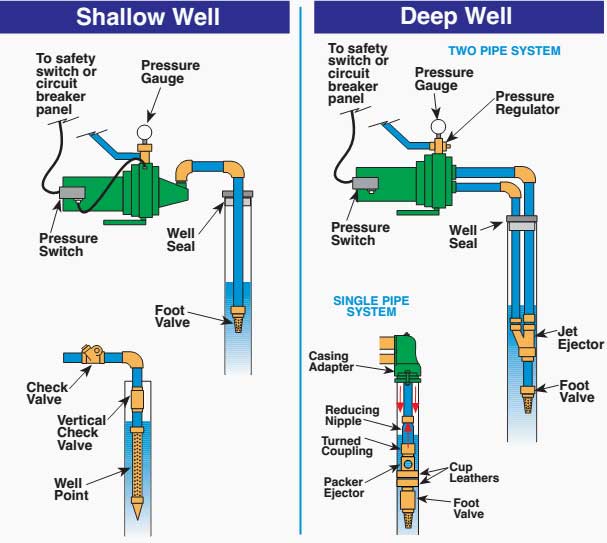I bought a cabin that had a buried wellhead. The cabin and well have set dormant for over 10 years. The well sits next to a river (75'-100' from the river bank).
It's a two-line system and it will only pressure up to 25-30 lbs and of course, the pump won't shut off. I'm thinking of a clogged injector at the bottom of the well.
I have dug up the well and it has a metal cap and covered up with rubber before it was buried.
The water is cloudy that is being pumped up. I'm thinking either groundwater is coming in through the top cap or sediment has built up at the bottom and is sucking dirt. Once I pull up the pipe I can check the water level and depth and see if it's sucking off the bottom and adjust the depth of the strainer/foot valve.
I have bought a new plastic/rubber seal for the wellhead and don't plan on burring it, but have an access tube and cover installed for now.
Can the injector be cleaned or unclogged or can I buy a new one? Are they specific to the pump?
Any other suggestion or advice would be greatly appreciated.
Thanks

It's a two-line system and it will only pressure up to 25-30 lbs and of course, the pump won't shut off. I'm thinking of a clogged injector at the bottom of the well.
I have dug up the well and it has a metal cap and covered up with rubber before it was buried.
The water is cloudy that is being pumped up. I'm thinking either groundwater is coming in through the top cap or sediment has built up at the bottom and is sucking dirt. Once I pull up the pipe I can check the water level and depth and see if it's sucking off the bottom and adjust the depth of the strainer/foot valve.
I have bought a new plastic/rubber seal for the wellhead and don't plan on burring it, but have an access tube and cover installed for now.
Can the injector be cleaned or unclogged or can I buy a new one? Are they specific to the pump?
Any other suggestion or advice would be greatly appreciated.
Thanks

